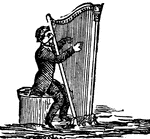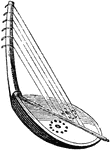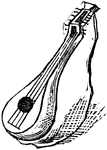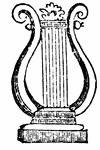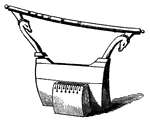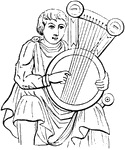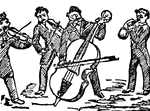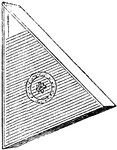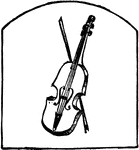The Stringed Musical Instruments ClipArt gallery offers 125 illustrations of the banjo, bass, balalaika, banjo, cittern, crwth guitar, harp, lute, mandolin, violin, and other stringed instruments.

Marloye's Harp
An illustration of Marloye's harp, used to show longitudinal vibrations in rods. It is made up a number…

Ancient Egyptian Harps
A harp is a stringed instrument of triangular form. The sculptures and ruins of the Egyptians and Syrians…
Ke
The main instrument in ancient Chinese culture. It is a stringed instrument entirely unlike any other…
Keyboard
The set of adjacent depressible levers on a musical instrument which cause the instrument to produce…
Kin
"The principle of the sound of silk is exemplified in the Kin or Ch'in, made of twisted silk being stretched…
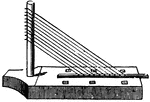
Kinnor
Kinnor is the Hebrew name for an ancient stringed instrument, the first mentioned in the Bible where…

Kinnor
Kinnor is the Hebrew name for an ancient stringed instrument, the first mentioned in the Bible where…

Koto
The koto is a traditional stringed musical instrument from Japan resembling a zither. Koto have 13 strings…

Lute
"The European lute is derived in form and name from the Arabic "el ud," "the wood," the consonant of…

Lyra
"A lyre, one of the most ancient musical instruments of the stringed kind. The Greeks attributed the…

Lyre
A stringed musical instrument well known for its use in Classical Antiquity. The recitations of the…

Lyre
A stringed instrument well known for its use in Classical Antiquity. It was used mainly by the Ancient…

Lyre
"Cithara or Phorminx, from a vase in the British Museum. Best period of Greek art." —The Encyclopedia…
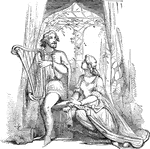
Man Playing a Harp for a Woman
A man and woman sitting together. The man is playing the harp and perhaps singing.

Mandolin
The strings of the mandolin are not plucked by the fingers like a guitar or harp, but with a little…

Mandolin
A mandolin is a musical instrument in the lute family (plucked, or strummed). It is descended from the…

Three Men Playing String Instruments
An illustration of three men playing string instruments, one playing the cello and two playing the violin.

Multiple Stringed Musical instrument
This stringed instrument is a combination of a banjo, guitar, and mandolin. Each of the heads that stick…

Rebab
The rebab is a string instrument originating in the Middle East. There are usually two or three strings.…

Rebab
The rebab is a string instrument originating in the Middle East. There are usually two or three strings.…
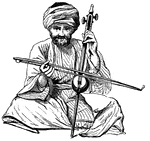
Rebec
The rebec is a bowed stringed instrument. It usually has three strings and is played under chin like…

Rebec
A bowed string musical instrument. In its most common form, it has three strings and is played on the…
Rebec
An old stringed instrument somewhat similar to the violin, having properly three strings tuned in fifths…

Sambuca
"A harp, was of oriental origin. The performances of sambucistriae were only known to the early Romans…

Sarinda
"Sarinda. A Hindu viol, which has a body made of a single wooden block, elliptical in general contour,…
Shamisen
The shamisen or samisen is a Japanese stringed instrument played with a plectrum (a) called a bachi.

Tsymbaly
The tsymbaly or santir is a dulcimer or chordophone used in the Ukraine and the Middle East.

Viola
The viola may be considered a large violin tuned a fifth lower or as a small cello tuned an octave higher.…

Violin
A stringed instrument played with a bow, having four strings tuned at intervals of a fifth, an unfretted…
